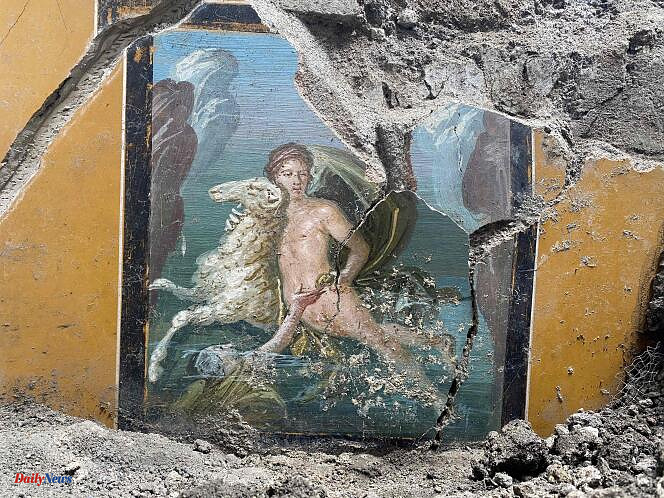Splendid frescoes representing, among other things, a striking mythological scene have been discovered in Pompeii, the management of the famous archaeological site located near Naples, in southern Italy, announced on Friday March 1.
It was restoration work and excavations which allowed “the discovery of these frescoes of great value”, in and around the House of Leda, one of the residences of the ancient city destroyed and buried under the ashes in year 79 during an eruption of Vesuvius.
The most striking is undoubtedly the one representing the mythological scene in which Phrixos and his twin sister, Hellé, flee their stepmother, Ino, on the ram with the Golden Fleece. Phrixos, perched on the rearing ram, helplessly witnesses Hellé's fall into the waters which they fly over on their mounts.
This “fresco which shows us two fugitives from ancient Greece”, in the words of the director of Pompeii, Gabriel Zuchtriegel, appears like a painting with its frame on a predominantly golden yellow wall decorated with delicate decorations.
A third of the city still buried
Among the other frescoes discovered are still lifes and portraits of women, particularly in medallions. The current excavations at the Maison de Léda aim to reconstruct the complete plan and to determine which are the main rooms of two other residences located to the north and south.
Fresco cleaning operations are underway to remove the volcanic ash and consolidate them before moving on to the restoration phase.
The volcanic ash spewed 2,000 years ago by Vesuvius settled on most of Pompeii's homes, allowing them to be almost completely preserved, as were many of the bodies of the 3,000 deaths caused by the disaster.
Listed as a UNESCO World Heritage Site, Pompeii, the second most visited tourist site in Italy after the Colosseum in Rome, covers an area of approximately 22 hectares, a third of which is still under the ashes.












